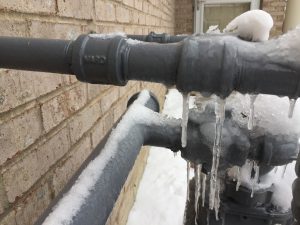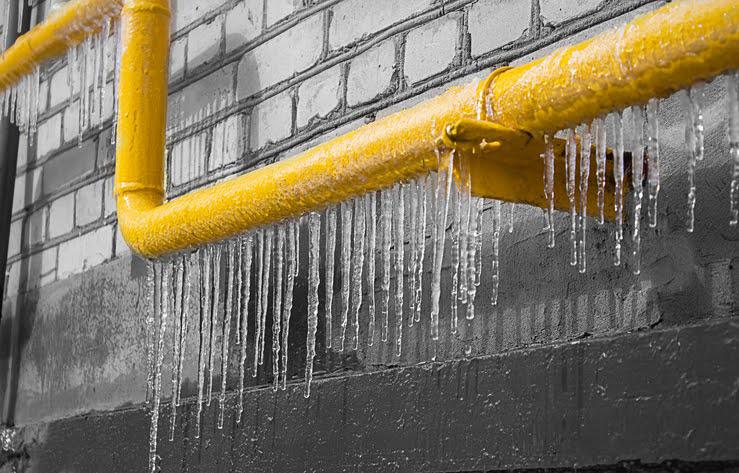Important Advice to Prevent Frozen Pipes in Cold Weather
Important Advice to Prevent Frozen Pipes in Cold Weather
Blog Article
We have encountered this post on Preventing and dealing with frozen pipes listed below on the net and reckoned it made sense to talk about it with you on my blog.

Winter can damage your plumbing, specifically by freezing pipes. Right here's how to stop it from occurring and what to do if it does.
Introduction
As temperature levels decrease, the threat of frozen pipelines boosts, potentially resulting in pricey repair work and water damages. Comprehending just how to prevent icy pipes is vital for homeowners in chilly environments.
Prevention Tips
Protecting vulnerable pipes
Cover pipelines in insulation sleeves or use heat tape to shield them from freezing temperatures. Focus on pipes in unheated or external locations of the home.
Heating strategies
Maintain indoor rooms properly heated up, particularly locations with pipes. Open up cupboard doors to enable cozy air to circulate around pipes under sinks.
How to identify icy pipelines
Seek lowered water flow from taps, uncommon smells or noises from pipelines, and noticeable frost on subjected pipes.
Long-Term Solutions
Structural changes
Take into consideration rerouting pipelines away from outside wall surfaces or unheated areas. Include extra insulation to attic rooms, basements, and crawl spaces.
Updating insulation
Invest in top quality insulation for pipes, attics, and wall surfaces. Appropriate insulation assists maintain consistent temperature levels and minimizes the risk of icy pipes.
Protecting Outside Pipes
Garden pipes and exterior faucets
Separate and drain yard tubes prior to winter season. Mount frost-proof spigots or cover exterior taps with insulated caps.
Understanding Icy Pipes
What causes pipelines to ice up?
Pipelines freeze when subjected to temperatures listed below 32 ° F (0 ° C) for expanded durations. As water inside the pipelines freezes, it broadens, taxing the pipe walls and possibly causing them to rupture.
Risks and damages
Icy pipelines can result in water interruptions, home damage, and costly fixings. Ruptured pipes can flooding homes and create considerable architectural damages.
Indications of Frozen Pipes
Recognizing icy pipes early can prevent them from bursting.
What to Do If Your Pipelines Freeze
Immediate activities to take
If you suspect frozen pipes, keep faucets available to eliminate stress as the ice thaws. Use a hairdryer or towels soaked in warm water to thaw pipes slowly.
Final thought
Stopping icy pipes needs aggressive procedures and fast responses. By understanding the reasons, signs, and safety nets, house owners can shield their plumbing throughout cold weather.
6 Proven Ways to Prevent Frozen Pipes and Protect Your Home
Disconnect and Drain Garden Hoses
Before winter arrives, start by disconnecting your garden hoses and draining any remaining water. Close the shut-off valves that supply outdoor hose bibs and leave the outdoor faucet open to allow any residual water to drain. For extra protection, consider using faucet covers throughout the colder months. It’s also important to drain water from any sprinkler supply lines following the manufacturer’s directions.
Insulate Exposed Pipes
Insulating your pipes is an effective way to prevent freezing. Pipe insulation is readily available at home improvement stores and is relatively inexpensive. Pay close attention to pipes in unheated areas such as the attic, basement, crawl spaces, or garage. Apply foam insulation generously to create a buffer against the cold. You can also wrap your pipes in heat tape or thermostat-controlled heat cables for added warmth.
Seal Air Leaks
Inspect your home for any cracks or openings that could let in cold air. Seal any holes around the piping in interior or exterior walls, as well as the sill plates where your home rests on its foundation. Additionally, make sure to keep your garage door closed unless you’re entering or exiting. Leaving it open creates a significant air leak that can lead to frozen pipes.
Allow Warm Air Circulation
During cold snaps, it’s essential to allow warm air to circulate evenly throughout your home. Leave interior doors ajar to promote better airflow. Open kitchen and bathroom cabinets to help distribute heat consistently around the rooms. If you have small children or pets, be sure to remove any household chemicals or potentially harmful cleaners from open cabinets for safety.
Let Faucets Drip
A small trickle of water can make a big difference in preventing ice formation inside your pipes. When temperatures drop significantly, start a drip of water from all faucets served by exposed pipes. This continuous flow helps prevent the water from freezing. Additionally, running a few faucets slightly can relieve pressure inside the pipes, reducing the chances of a rupture if the water inside does freeze.
https://choateshvac.com/6-proven-ways-to-prevent-frozen-pipes-and-protect-your-home/

We had been brought to that article on Winter Plumbing Precautions: Preventing Frozen Pipes from an associate on another web address. In case you enjoyed reading our blog post please remember to share it. Bless you for being here. Return soon.
Click Here Report this page